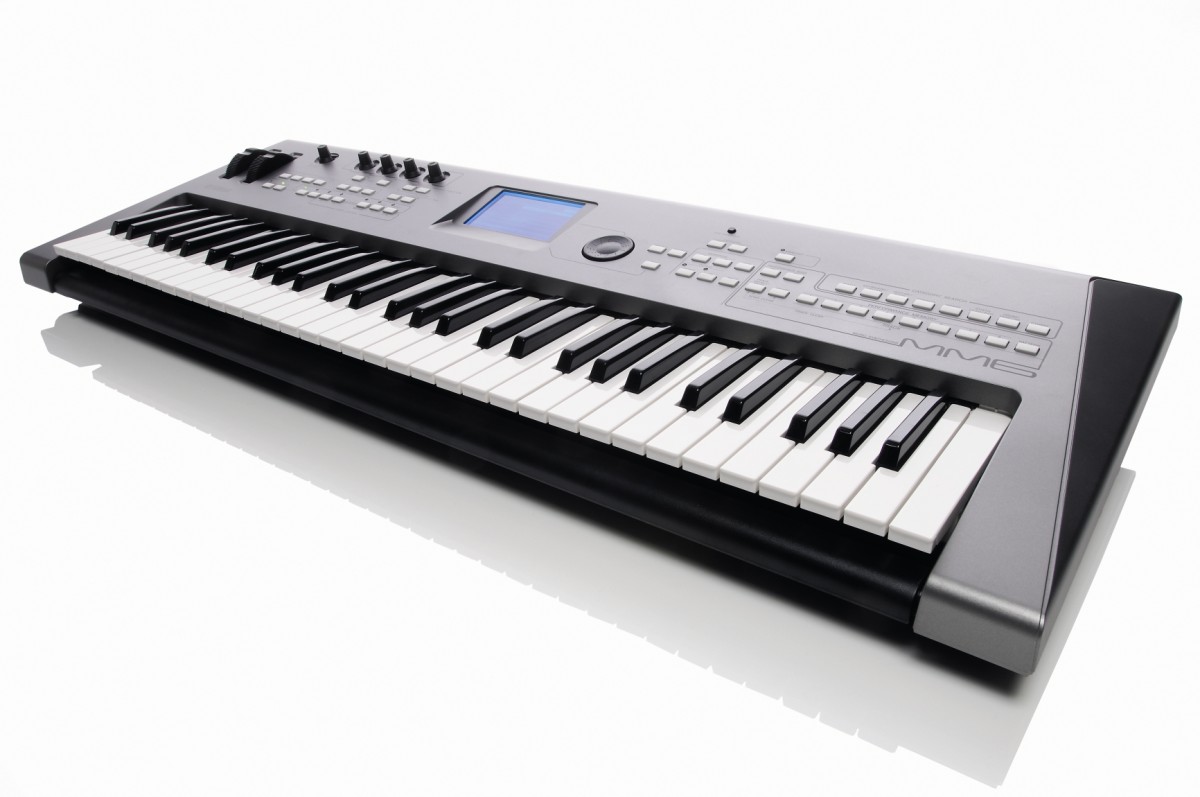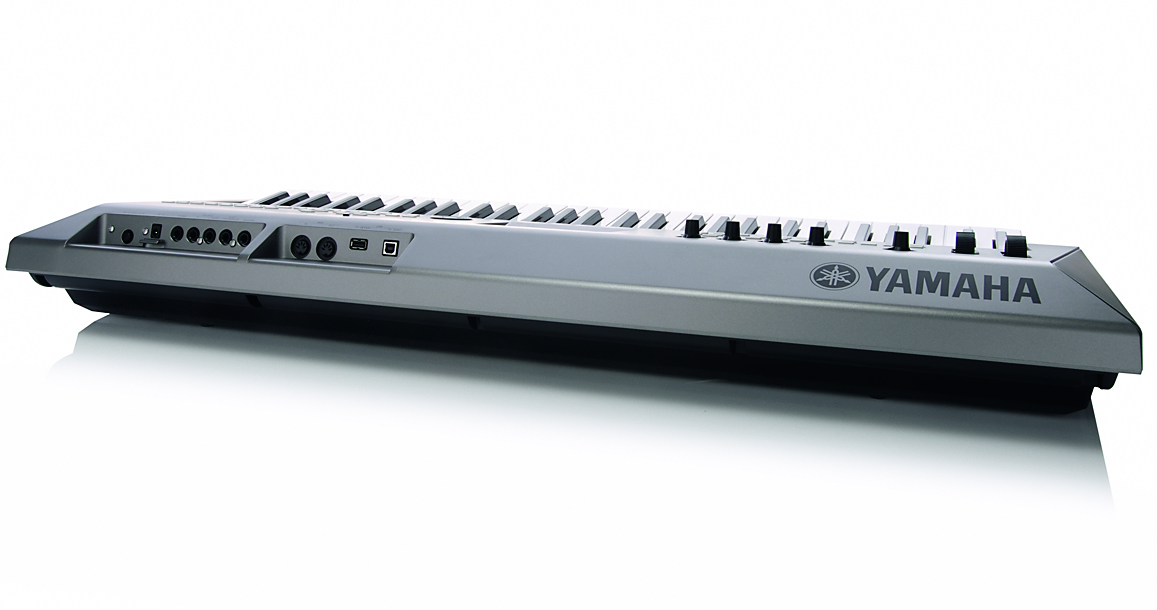MusicRadar Verdict
Good value, some useful sounds and it's easy to use, but it´s not for the dedicated sound-mangler.
Pros
- +
Very easy to use. Lots of effects.
Cons
- -
Feels a bit flimsy. Some instruments disappointing.
MusicRadar's got your back


The Yamaha Motif was brought to the masses back in 2001, the initial trio of workstations inspiring a fan-base enamoured of the lush AWM2 timbres, sample-mangling facilities, powerful onboard sequencers and (in the case of the Motif 8) Clavinova-style balanced hammer keys.
There was stiff competition from the mighty Korg Triton and Roland's Fantom-X. But sound quality, flexibility, performance and sheer charm (a near impenetrable manual, peculiar operating system and the slightly mad decision to use ill-fated SmartMedia for memory expansion) garnered the machines many a high-profile devotee. Two years later and (more being more) the Motif ES range saw daylight, bringing roughly twice the waveform capacity, memory and polyphony, while still offering the mLAN connectivity and expansion potential via PLG plug-in boards of the originals. The XS version yet again near doubles the number of onboard waveforms (now 2,670 in 355MB of wave ROM), but at a price.
We're not all well-heeled enough to keep up or buy in from scratch even, and while 'lite' Motifs in the shape of the MO6 and MO8 surfaced in 2005, Yamaha still recognises an entry-level market seeking the tone of the full-fat workstations. Hence the new MM6 (code-named 'Mini-MO'). It's a 61-key budget synth with 418 voices and 22 drum kits based on the sound libraries of its maxi-sized brethren, a selection of tweakables for real-time sound-warping, and a smattering of auto-accompaniment features.
While expansion isn't an option, the MM6 sports USB ports for hooking up to a computer or other storage device, so that songs, pattern files, performance settings and more can be backed up as SMF, ready for replay on any compatible device. Physically, it's a lightweight lump and clearly built to a price - its 5kg feels a bit plasticky, although the top panel buttons seem positive enough. The synth-style keyboard isn't quite up there with the one on the original Motif, and the range of controller knobs are none too grippy, but the blue, backlit LCD is clear and more user-friendly in terms of layout and iconography than its predecessors' green screens.
Control
The rear panel hosts limited controller connectivity - just a foot controller and sustain socket alongside stereo/mono main outs and a headphone socket - although both 'to device' and 'to host' USB ports sit alongside the MIDI I/O ports. The top panel, meanwhile, makes driving this instrument child's play. On the left, there's continuous controllers, song and pattern control, along with the requisite transport buttons, while on the right there's the means to call up voices and performances.
Tracking down a particular timbre is a doddle thanks to eight Category Search buttons that invite you to choose an instrument type. Category contents appear in the central 320x240-dot LCD and are scrollable via the accompanying dial. So we jump straight to Piano - ever a good timbre with which to test - and start riffing. For all the lush sounds the Motif legacy promises, the pianos are (while acceptable) generally rather plain. Riffling through the rest of the sounds - an endeavour made mega-efficient thanks to Category Search - reveals patches of varying quality; some limp, but some truly useful, especially in the Synth/Lead Pad section.
Want all the hottest music and gear news, reviews, deals, features and more, direct to your inbox? Sign up here.
The 22-strong gaggle of drumkits has a few highlights, with a solid-sounding Standard kit alongside passable TR-alikes, but best give the two SFX kits a miss - their minimal number of cheesy hits just doesn't hack it. There are also some bouncy basses to be had, provided you're not expecting bowel-loosening, analogue-style crunch. While those hankering for natural timbres may be disappointed, seekers of synthesized warbles are well catered for. There are instant jollies to be had with the Arpeggiator button, which offers 213 preset pattern types. Used in conjunction with the controller knobs (providing manipulation of cutoff, resonance, attack and release) you've got instant dance music gurgling for foot-tapping fun.
The keyboard can be split, should you have the type of weird brain wiring necessary for two-handed playing, or you can engage ham-fingered pattern accompaniment with your left hand by prodding Finger and Sync Start. On the right-hand side, the Track section is host to a metronome-assisted eight-track sequencer, by which you can save up to five of your own creations in internal memory, or 400 via USB (there are three factory tracks supplied to give an idea of what's possible).
Naturally, with some of the sounds lacking a certain je ne c'est what, you'll want to don the producer's hat and get processing. The MM6 has an arsenal of effects devices, including 25 reverbs and 30 chorus types, plus 189 assorted distortion, phasing, tremolo, rotary, wah, flanging, EQ and other processors that are dialled in via Utility mode. If you can't enliven a so-so CP-80 patch with that lot, consider a change of career.
Features
As you delve into the feature set, devising favourite configurations for various occasions, saving them is a good idea and is made easy with the 64 performance memory locations. You can commit pattern, voice, split, effects, arpeggio settings and more to the MM's memory. And should you run out of space for performances and songs, it's a case of slotting a USB pen drive into the aforementioned 'to device' port at rear, formatting it and saving out the content. The 'to device' port is also a convenient way to swap data.
For the price, the MM6 does a decent job. You'd not want to trust it to a clumsy roadie, such is its lightweight construction. And if you're the deep editing type who shuns factory presets in favour of self-authored tones, then buy a new soft synth or something. This isn't for programmers. What it does provide is a low-cost route into Motif territory, offering instant gratification via the arpeggiator, workable sounds (if you get down and dirty with the extensive effects) and some control-surface functionality.
Your granny could likely operate this - which can't be said for mega-Motifs - and its timbres are good enough to contribute well to a standards band. There's an amount of potential for creating dance-type ditties, and it does a good job as a songwriting sketchpad. An extra set of GM voices - 128 normal and one drumkit - is also loaded, so it's a convenient MIDI file player, and there's a selection of jam patterns in various genres on hand should you need to work on improvisation technique. For home practice, project-studio songwriting and an amount of live performance, the MM6 delivers well and for not a lot of dosh. Hopefully by the time you've tired of its limitations you'll be ready to afford a mightier Motif for first-hand experience of why this range has attracted so many plaudits.
MusicRadar is the number 1 website for music makers of all kinds, be they guitarists, drummers, keyboard players, djs or producers...
GEAR: We help musicians find the best gear with top-ranking gear round-ups and high- quality, authoritative reviews by a wide team of highly experienced experts.
TIPS: We also provide tuition, from bite-sized tips to advanced work-outs and guidance from recognised musicians and stars.
STARS: We talk to musicians and stars about their creative processes, and the nuts and bolts of their gear and technique. We give fans an insight into the actual craft of music making that no other music website can.
